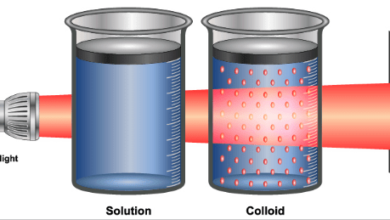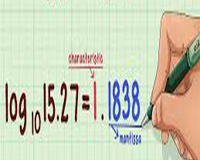Chemical Equilibrium: reversible reaction & forward reaction + examples
Chemical Reaction
Any change which alters the composition of a substance is known as chemical change or chemical reaction.
Types of Reaction
There are two types of reactions:
- Irreversible reaction or One-sided Reactions or Complete Reactions
- Reversible reactions or Two-sided Reactions or Incomplete Reactions
Irreversible Reactions or Forward Reactions
The reaction which proceeds to completion in a definite direction and reactants are completely changed into products, such reactions are known as irreversible reactions.
Examples:
NaCl + AgNO3 → NaNO3 + AgCl
BaCl + H2SO4 → BaSO4 + 2HCl
KOH + HNO3 → KNO3 + H2O
- It is a reaction in which reactants react to form products.
- It takes place from left to right.
- At the initial stage, the rate of the forward reaction is very fast.
- The forward reaction slows down gradually.
- Reversible Reactions
The reactions which never proceed to completion and some amount of reactants, small or large, always remain unreacted, are reversible reactions.
For such reactions under the same conditions, both the forward and reverse reactions can occur at the same time. In this type of reaction not only react to form products but products also react to give back the reactants.
- It is a reaction in which the products react to produce reactants.
- It takes place from right to left.
- In the beginning, the rate of the reverse reaction is negligible.
- It speeds up gradually.
Equilibrium State
“The state in a reversible reaction in which the rate of the forward reaction becomes equal to the rate of the backward (reverse) reaction is known as equilibrium state”.
Equilibrium Law or Law of Mass Action
Statement
“The state at which a substance reacts is the proportional active mass (molar concentration) and the rate of a chemical reaction is proportional to the product of the active masses (molar concentration) of reactants”.
Or
“at equilibrium, the ratio of the concentration of the products and the reactants remain constant.” The term active mass meaning the concentration in terms of moles/dm3 or mol/lit, represented by square bracket [ ].
Derivation of Kc
Consider the following reversible reaction in which ‘m’ moles of ‘A’ react with ‘n’ moles of ‘B’ to give ‘x’ moles of ‘C’ and ‘y’ moles of ‘D’.
Derivation of Kp
For gaseous reaction (the reactions in which all the reactants and products are gases) it is convenient to write the equilibrium constant (K) in terms of the partial pressure because at a constant temperature the partial pressure of a gas is directly proportional to its concentration.




